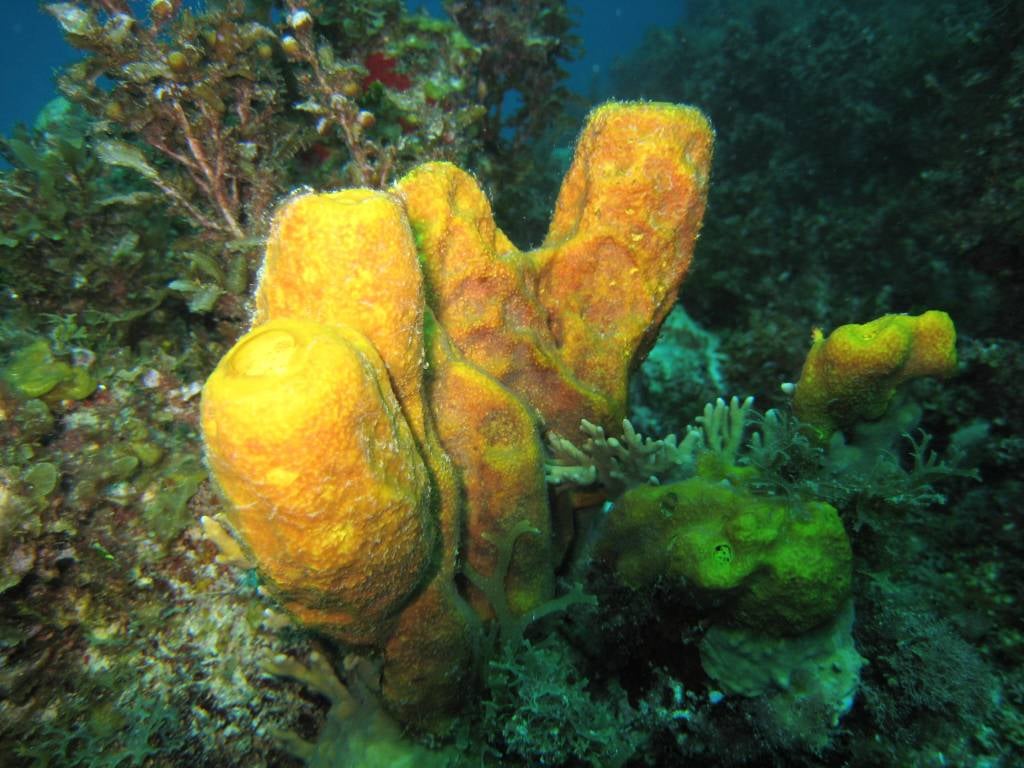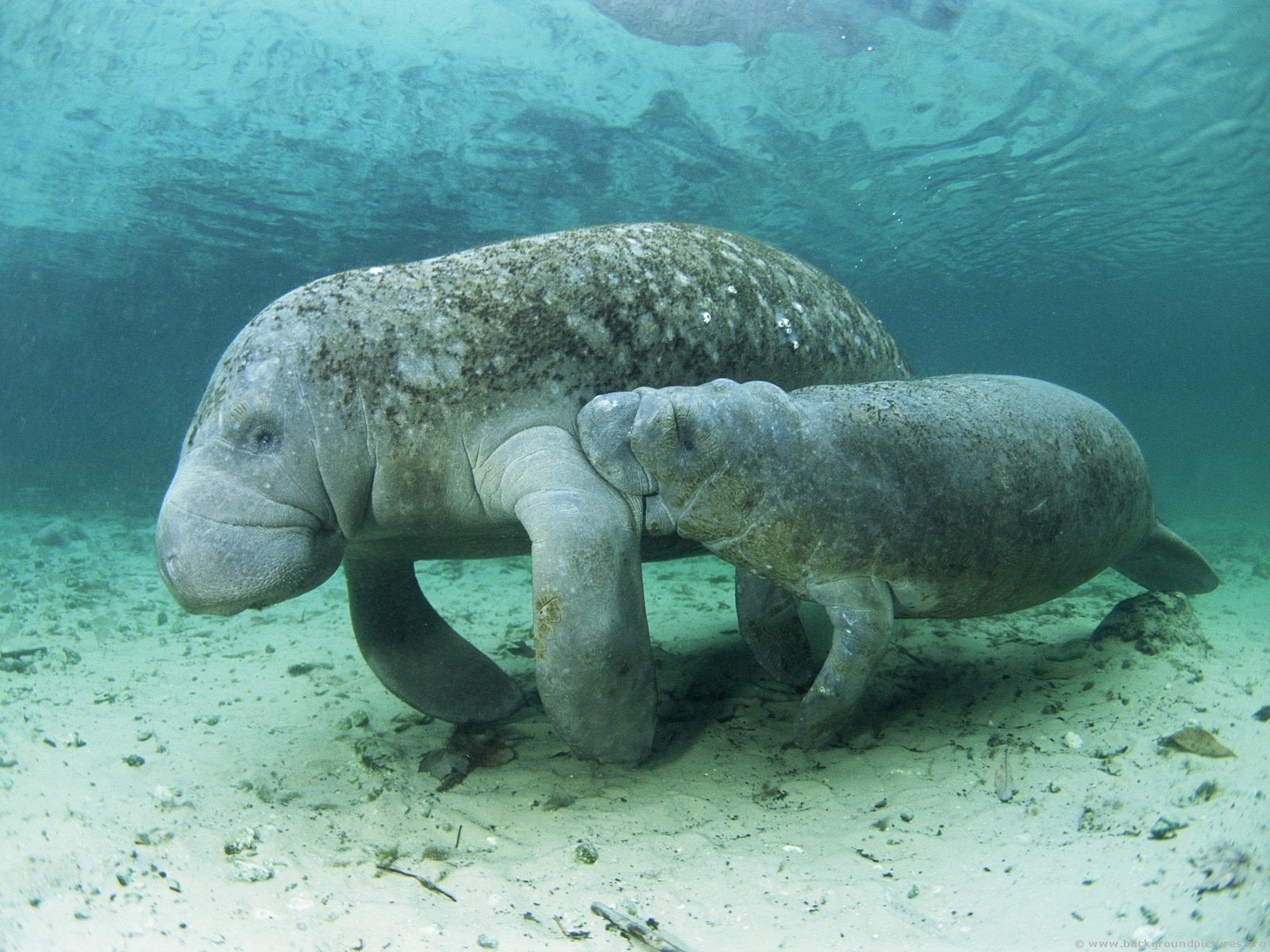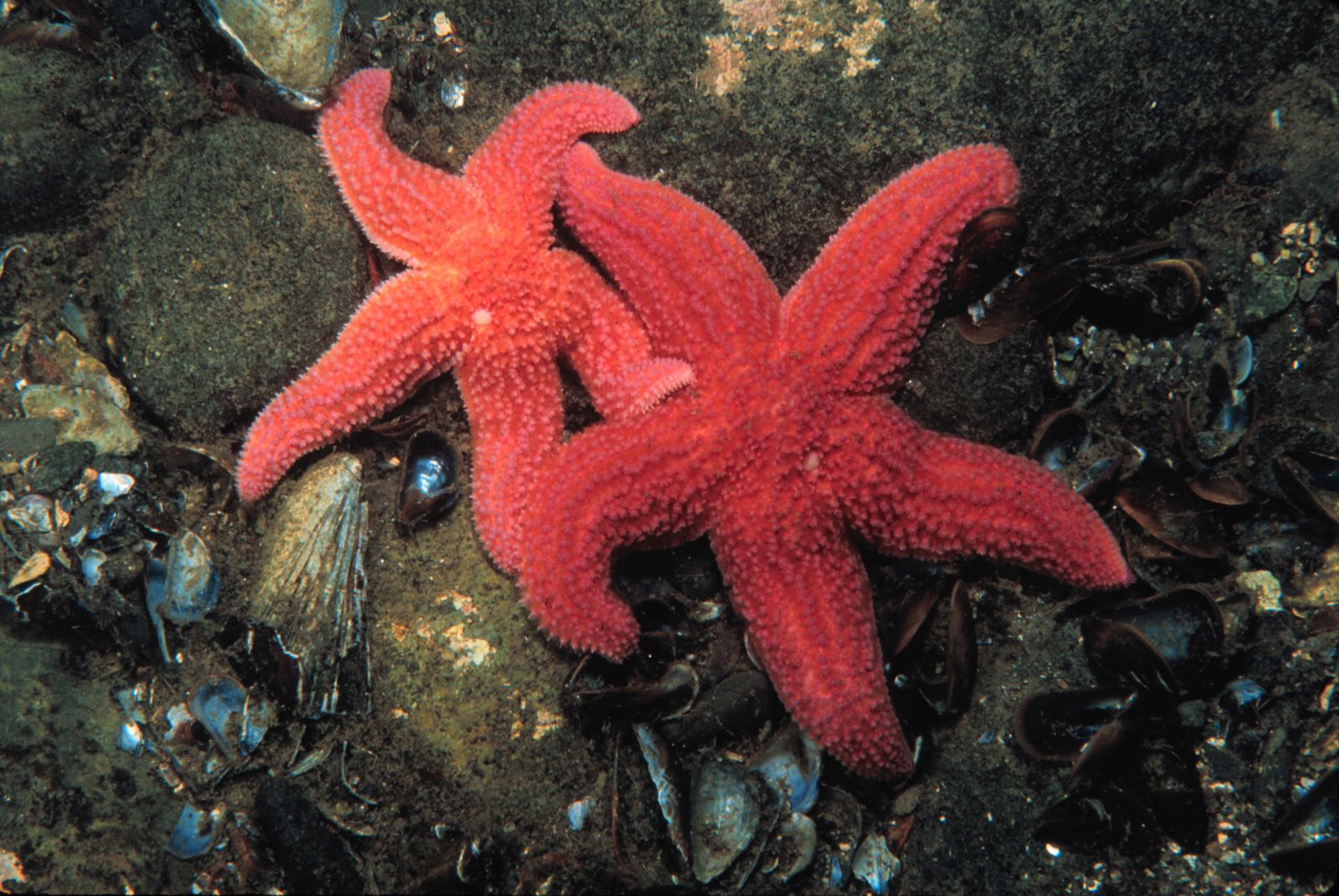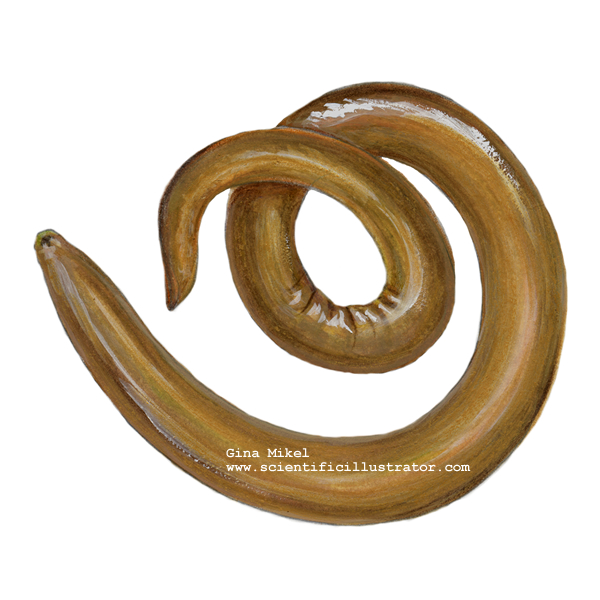Quiz - Animal Kingdom

This is a quiz on the Animal Kingdom. There are 25 questions and 15 will be randomly selected for each quiz. You MAY use your study guide, but keep in mind that you only have 15 minutes to complete the quiz.
Good luck!
- 1.
To what category of animals do the yellow sponges in this photo belong?
- A.
Porifera
- B.
Cnidaria
- C.
Nematoda
- D.
Vertebrates
Correct Answer
A. PoriferaExplanation
The yellow sponges in the photo belong to the category of animals called porifera. This is because porifera, also known as sponges, are characterized by their porous bodies and lack of true tissues or organs. Sponges are filter feeders that live in aquatic environments and play important roles in marine ecosystems. They are known for their ability to filter water and extract nutrients from it.Rate this question:
-
- 2.
The majority of invertebrate species belong to which category of animals?
- A.
Arthropods
- B.
Mollusks
- C.
Cnideria
- D.
Mammals
Correct Answer
A. ArthropodsExplanation
The majority of invertebrate species belong to the category of arthropods. Arthropods include insects, spiders, crustaceans, and other related organisms. They are characterized by their jointed limbs, segmented bodies, and exoskeletons. Arthropods are incredibly diverse and can be found in various habitats worldwide. They play essential roles in ecosystems as pollinators, decomposers, and prey for other animals. With over a million described species, arthropods make up the largest phylum in the animal kingdom.Rate this question:
-
- 3.
____________________ are animals with an exoskeleton, segmented bodies, and jointed appendages. Insects, crustaceans, and arachnids belong to this category of animal.
- A.
Arthropods
- B.
Annelids
- C.
Mollusks
- D.
Vertebrates
Correct Answer
A. ArthropodsExplanation
Arthropods are animals with an exoskeleton, segmented bodies, and jointed appendages. This category includes insects, crustaceans, and arachnids. Arthropods are characterized by their hard outer covering, which provides protection and support for their bodies. Their segmented bodies allow for flexibility and movement, while their jointed appendages enable them to perform a wide range of actions such as walking, grabbing, and flying. Arthropods have a high level of diversity and can be found in various habitats around the world.Rate this question:
-
- 4.
__________________________ are vertebrates that undergo a metamorphosis during some time during their lives.
- A.
Amphibians
- B.
Butterflies
- C.
Iguanas
- D.
Reptiles
Correct Answer
A. AmphibiansExplanation
Amphibians are vertebrates that undergo a metamorphosis during some time during their lives. This means that they go through a transformation from an aquatic larval stage, such as a tadpole, to a terrestrial adult stage. This process allows them to adapt to different environments and lifestyles. Butterflies also undergo a metamorphosis, but they are not vertebrates. Iguanas and reptiles do not undergo metamorphosis. Therefore, the correct answer is amphibians.Rate this question:
-
- 5.
What is a characteristic of all living organisms?
- A.
They are made of cells
- B.
They all have chloroplasts to make their food from the energy from sunlight
- C.
All living organisms are multi-cellular
- D.
All living things have backbones
Correct Answer
A. They are made of cellsExplanation
All living organisms are made of cells. Cells are the basic structural and functional units of life. They carry out essential processes such as metabolism, growth, reproduction, and response to stimuli. Whether an organism is unicellular or multicellular, it is composed of cells. Cells provide the necessary structure and organization for living organisms to carry out their functions and maintain homeostasis. Therefore, the characteristic of being made of cells is universal to all living organisms.Rate this question:
-
- 6.
Check ALL of the characteristics that explain why the baby manatee shown below is a MAMMAL:
- A.
It drinks mother's milk when it's a baby
- B.
It is warm blooded
- C.
It's cute
- D.
It is born alive
- E.
It has hair, or it's recent ancestors had hair
- F.
It's cold-blooded
Correct Answer(s)
A. It drinks mother's milk when it's a baby
B. It is warm blooded
D. It is born alive
E. It has hair, or it's recent ancestors had hairExplanation
The baby manatee shown below is a mammal because it drinks mother's milk when it's a baby, it is warm-blooded, it is born alive, and it has hair, or its recent ancestors had hair.Rate this question:
-
- 7.
Warm-blooded animals that have a backbone and lay hard-shelled eggs are...
- A.
Birds
- B.
Fish
- C.
Mammals
- D.
Reptiles
- E.
Amphibians
Correct Answer
A. BirdsExplanation
Birds are warm-blooded animals that have a backbone and lay hard-shelled eggs. They are classified as avian reptiles, belonging to the class Aves. Birds have adaptations such as feathers and wings that enable them to fly. They are also known for their beaks and ability to produce complex songs. Birds exhibit a wide range of behaviors and can be found in various habitats worldwide. Some examples of birds include eagles, penguins, owls, and hummingbirds.Rate this question:
-
- 8.
Cold-blooded animals with dry scales, a backbone, and that lay leathery eggs are...
- A.
Reptiles
- B.
Mammals
- C.
Amphibians
- D.
Fish
- E.
Birds
Correct Answer
A. ReptilesExplanation
Reptiles are cold-blooded animals that have dry scales, a backbone, and lay leathery eggs. Mammals are warm-blooded animals that give live birth and have fur or hair. Amphibians are cold-blooded animals that have moist skin and lay eggs in water. Fish are cold-blooded animals that have gills and lay eggs in water. Birds are warm-blooded animals that have feathers and lay hard-shelled eggs. Therefore, the correct answer is reptiles.Rate this question:
-
- 9.
All birds can fly and no mammals can fly.
- A.
True
- B.
False
Correct Answer
B. FalseExplanation
This statement is false because not all birds can fly. There are certain bird species, such as penguins and ostriches, that have wings but are unable to fly. Additionally, there are mammals that can fly, such as bats. Therefore, the statement that all birds can fly and no mammals can fly is incorrect.Rate this question:
-
- 10.
Clams, octopi, and squid all belong to which phylum of invertebrates?
- A.
Mollusks
- B.
Annelids
- C.
Cnidaria
- D.
Echinodermata
Correct Answer
A. MollusksExplanation
Clams, octopi, and squid all belong to the phylum mollusks. Mollusks are a diverse group of invertebrates that typically have a soft body, a muscular foot, and a mantle that may secrete a shell. Clams, octopi, and squid are all examples of mollusks that have different adaptations and characteristics within this phylum.Rate this question:
-
- 11.
______________ is a phylum containing over 10,000 species of animals found exclusively in aquatic and mostly marine environments. Their distinguishing feature is cnidocytes, specialized stinging cells that they use mainly for capturing prey. Animals in this phylum include jellyfish and Portuguese man of war.
- A.
Cnideria
- B.
Mammalia
- C.
Nematode
- D.
Echinodermata
Correct Answer
A. Cnideria -
- 12.
_________________are a phylum of marine animals. The adults are recognizable by their radial symmetry, and include such well-known animals as starfish, sea urchins, sand dollars, and sea cucumbers.
- A.
Echinodermata
- B.
Reptilians
- C.
Nematodes
- D.
Porifera
Correct Answer
A. EchinodermataExplanation
Echinodermata is the correct answer because it is the phylum of marine animals that have radial symmetry and include starfish, sea urchins, sand dollars, and sea cucumbers. Reptilians, nematodes, and porifera are not phyla that fit the given description.Rate this question:
-
- 13.
Some animals don't fall neatly into one category or another. The platypus is one example. They lay eggs instead of giving live birth. Why do scientists consider a platypus a mammal. Check ALL that apply.
- A.
Platypus young drink mother's milk
- B.
They are warm-blooded
- C.
They have fur
- D.
They live in the water
- E.
They lay eggs
- F.
They are born alive
Correct Answer(s)
A. Platypus young drink mother's milk
B. They are warm-blooded
C. They have furExplanation
The platypus is considered a mammal because it possesses certain characteristics that are common to mammals. These include the fact that platypus young drink their mother's milk, indicating that they are capable of lactation. Additionally, they are warm-blooded, meaning that they can regulate their body temperature internally. Lastly, they have fur, which is a defining characteristic of mammals. The fact that they lay eggs does not exclude them from being classified as mammals, as there are other mammals, such as the echidna, that also lay eggs.Rate this question:
-
- 14.
I'm warm-blooded, lay hard-shelled eggs, and have feathers. What am I?
- A.
A bird
- B.
A turtle
- C.
A mammal
- D.
An insect
Correct Answer
A. A birdExplanation
The given characteristics of being warm-blooded, laying hard-shelled eggs, and having feathers are all unique to birds. Birds are the only animals that possess these specific traits, making them the correct answer.Rate this question:
-
- 15.
There are more invertebrate species than vertebrate species?
- A.
True
- B.
False
Correct Answer
A. TrueExplanation
Invertebrates are animals that do not have a backbone, while vertebrates are animals that have a backbone. In general, there are more species of invertebrates than vertebrates. This is because invertebrates make up the majority of the animal kingdom and include a wide range of diverse groups such as insects, worms, mollusks, and crustaceans. Vertebrates, on the other hand, include mammals, birds, reptiles, amphibians, and fish, which are fewer in number compared to the vast array of invertebrate species.Rate this question:
-
- 16.
I'm an annelid?
- A.
True
- B.
False
Correct Answer
B. FalseExplanation
The statement "I'm an annelid" implies that the speaker is an annelid, which is a type of segmented worm. However, since the speaker is a human and not a worm, the statement is false.Rate this question:
-
- 17.
I'm a segmented worm. What phylum do I belong to?
- A.
Annelida
- B.
Nematoda
- C.
Mammalia
- D.
Echinodermata
Correct Answer
A. AnnelidaExplanation
The correct answer is annelida. Annelida is the phylum that includes segmented worms. These worms have bodies made up of repeating segments, which gives them their characteristic segmented appearance. They can be found in various habitats, including marine, freshwater, and terrestrial environments. Annelids play important roles in ecosystems as decomposers and as a food source for other organisms. Examples of annelids include earthworms, leeches, and polychaete worms.Rate this question:
-
- 18.
I'm warm-blooded and do not drink mother's milk. I must be a ...
- A.
Bird
- B.
Fish
- C.
Mammal
- D.
Reptile
- E.
Amphibian
Correct Answer
A. BirdExplanation
The statement mentions that the organism is warm-blooded and does not drink mother's milk. This indicates that the organism is not a mammal, as mammals are warm-blooded and typically drink mother's milk. Reptiles and amphibians are also not warm-blooded. Fish, on the other hand, are cold-blooded and do not drink mother's milk. Therefore, the only option left is a bird, which is warm-blooded and does not drink mother's milk.Rate this question:
-
- 19.
I'm cold-blooded lay jelly-like eggs, and undergo a metamorphosis in which I change from being an underwater animal to being a land animal. I must be a...
- A.
Amphibian
- B.
Reptile
- C.
Fish
- D.
Mammal
- E.
Bird
Correct Answer
A. AmphibianExplanation
Amphibians are cold-blooded animals that lay jelly-like eggs and undergo metamorphosis, transitioning from an aquatic lifestyle to a terrestrial one. This process involves significant physical changes, such as the development of lungs and limbs. Reptiles, fish, mammals, and birds do not typically exhibit this type of metamorphosis, making amphibians the correct answer.Rate this question:
-
- 20.
There are no warm-blooded animals that live in oceans.
- A.
True
- B.
False
Correct Answer
B. FalseExplanation
The statement is false because there are warm-blooded animals that live in oceans. Examples of warm-blooded marine animals include dolphins, whales, and seals. These animals have the ability to regulate their body temperature, which allows them to survive in the cold ocean waters.Rate this question:
-
- 21.
Check ALL that are true about the animals below:
- A.
They are warm-blooded
- B.
They are cold-blooded
- C.
They all live in the water at some point in their lives
- D.
They lay soft, leathery eggs
- E.
They have dry scales
- F.
They are invertebrates
Correct Answer(s)
B. They are cold-blooded
D. They lay soft, leathery eggs
E. They have dry scalesExplanation
The correct answer is that the animals are cold-blooded, lay soft, leathery eggs, and have dry scales. This means that they do not regulate their body temperature internally, instead relying on the environment to maintain their body heat. They reproduce by laying eggs with soft, leathery shells. Additionally, they have dry scales covering their bodies, which provide protection and help prevent water loss.Rate this question:
-
- 22.
There are more arthropod species than mammal species.
- A.
True
- B.
False
Correct Answer
A. TrueExplanation
Arthropods are a diverse group of animals that include insects, spiders, crustaceans, and more. They are incredibly abundant and have adapted to various environments, resulting in a large number of species. On the other hand, mammals, while diverse, have a lower number of species compared to arthropods. Therefore, it is true that there are more arthropod species than mammal species.Rate this question:
-
- 23.
Check ALL that accurately describe this animal:
- A.
Cold-blooded
- B.
Has a backbone
- C.
Cells have chloroplasts - that's why it's green
- D.
Mothers give live birth
- E.
Has dry, scaly skin
- F.
Mother chameleons lay eggs
- G.
Warm-blooded
Correct Answer(s)
A. Cold-blooded
B. Has a backbone
E. Has dry, scaly skin
F. Mother chameleons lay eggsExplanation
This animal is cold-blooded because it is mentioned in the options. It has a backbone because it is mentioned in the options. It has dry, scaly skin because it is mentioned in the options. Mother chameleons lay eggs because it is mentioned in the options.Rate this question:
-
- 24.
These animals are all invertebrates.
- A.
True
- B.
False
Correct Answer
B. FalseExplanation
The animals mentioned in the question are not specified, so it is impossible to determine whether they are invertebrates or not. Therefore, the correct answer is False.Rate this question:
-
Quiz Review Timeline +
Our quizzes are rigorously reviewed, monitored and continuously updated by our expert board to maintain accuracy, relevance, and timeliness.
-
Current Version
-
Jun 03, 2023Quiz Edited by
ProProfs Editorial Team -
Mar 05, 2014Quiz Created by
Kevin Aulow
- Amphibian Quizzes
- Bird Quizzes
- Cat Quizzes
- Dinosaur Quizzes
- Dog Quizzes
- Emperor Penguin Quizzes
- Endangered Species Quizzes
- Fish Quizzes
- Goat Quizzes
- Hamster Quizzes
- Horse Quizzes
- Insect Quizzes
- Invertebrate Quizzes
- Mammal Quizzes
- Mouse Quizzes
- Nematode Quizzes
- Pet Quizzes
- Pig Quizzes
- Rabbit Quizzes
- Reptile Quizzes
- Sheep Quizzes
- Wolf Quizzes
- Zoo Quizzes
 Back to top
Back to top









.jpg)

